Farsightedness
Farsightedness is having a harder time seeing objects that are close than things that are far away.
The term is often used to describe the need for reading glasses as you get older. However, the correct term for that condition is presbyopia. Although related, presbyopia and hyperopia (farsightedness) are different conditions. People with hyperopia will also develop presbyopia with age.
Causes
Farsightedness is the result of the visual image being focused behind the retina rather than directly on it. It may be caused by the eyeball being too small or the focusing power being too weak. It can also be a combination of both.
Retina
The retina is the light-sensitive layer of tissue at the back of the eyeball. Images that come through the eye's lens are focused on the retina. Th...

Farsightedness is often present from birth. However, children have a very flexible eye lens, which helps make up for the problem. As aging occurs, glasses or contact lenses may be needed to correct the vision. If you have family members who are farsighted, you are also more likely to become farsighted.
Seeing - Animation
Vision is the dominant sense for most people with sight. The organ of sight is the eye. Think of it as a slightly irregular, hollow sphere that takes in light and translates it into images. If we enlarge the eye and look inside it, we can discover how that's done. Inside the eye are various structures working together to create an image the brain can understand. Among these are the cornea, a clear dome-like structure covering the iris or colored part of the eye, the lens directly below it, and the retina, which lines the back of the eye. The retina consist of thin layers of light-sensitive tissue. This candle can help us understand how the eye captures images and then sends them to the brain. First, the candlelight passes through the cornea. As it does, it's bent, or refracted, onto the lens. As the light passes through the lens, it's bent a second time. Finally, it arrives at the retina where an image is formed. This double bending, though, has reversed the image and turned it upside down. If that was the end of the story, the world would always appear upside down. Fortunately, the image is turned right side up in the brain. Before that can happen, the image needs to travel as impulses along the optic nerve and enter the brain's occipital lobe. When the image forms there, it regains its proper perspective. Now let's consider two common conditions that cause blurry vision. The eye's shape is important for keeping things in focus. With normal vision, light focuses precisely on the retina at a location called the focal point. But what happens if the eye is longer than normal? The longer the eye, the more distance there is between the lens and retina. But the cornea and lens still bend light the same way. That means the focal point will be somewhere in front of the retina rather than on it. This makes it difficult to see things that are far away. A person with a long eye is said to be nearsighted. Glasses with concave lenses can correct nearsightedness. The lens widens the plain of light coming through the cornea. That pushes the focal point back onto the retina. Farsightedness is just the opposite. The eye's length is too short. When that happens, the focal point is behind the retina. So it's difficult to see things that are up close. Glasses with convex lenses narrow the plain of light. Narrowing the light passing through the cornea moves the focal point back onto the retina and can correct farsightedness.
Symptoms
Symptoms include:
-
Aching eyes
Aching eyes
Pain in the eye may be described as a burning, throbbing, aching, or stabbing sensation in or around the eye. It may also feel like you have a forei...
Read Article Now Book Mark Article -
Blurred vision when looking at close objects
Blurred vision
There are many types of eye problems and vision disturbances, such as: Halos Blurred vision (the loss of sharpness of vision and the inability to see...
 ImageRead Article Now Book Mark Article
ImageRead Article Now Book Mark Article - Crossed eyes (strabismus) in some children
- Eye strain
- Headache while reading
Mild farsightedness may not cause any problems. However, you may need reading glasses sooner than people who do not have this condition.
Exams and Tests
A general eye exam to diagnose farsightedness may include the following tests:
- Eye movement testing
- Glaucoma testing
- Refraction test
- Retinal examination
-
Slit-lamp examination
Slit-lamp examination
The slit-lamp examination looks at structures that are at the front of the eye.
 ImageRead Article Now Book Mark Article
ImageRead Article Now Book Mark Article -
Visual acuity
Visual acuity
The visual acuity test is used to determine the smallest letters you can read on a standardized chart (Snellen chart) or a card held 20 feet (6 meter...
 ImageRead Article Now Book Mark Article
ImageRead Article Now Book Mark Article - Cycloplegic refraction, a refraction test done with the eyes dilated
This list is not all-inclusive.
Treatment
Farsightedness is easily corrected with glasses or contact lenses. Surgery is available for correcting farsightedness in adults. This is an option for those who do not wish to wear glasses or contacts.
Outlook (Prognosis)
The outcome is expected to be good.
Possible Complications
Farsightedness can be a risk factor for glaucoma and crossed eyes.
Glaucoma
Glaucoma is a group of eye conditions that can damage the optic nerve. This nerve sends the images you see to your brain. Most often, optic nerve da...

When to Contact a Medical Professional
Call your health care provider or eye doctor if you have symptoms of farsightedness and you have not had a recent eye exam.
Also, call if vision begins to get worse after you have been diagnosed with farsightedness.
See a provider right away if you think you have farsightedness and you suddenly develop the following symptoms:
- Severe eye pain
- Eye redness
- Decreased vision
Reviewed By
Linda J. Vorvick, MD, Clinical Professor, Department of Family Medicine, UW Medicine, School of Medicine, University of Washington, Seattle, WA. Also reviewed by David C. Dugdale, MD, Medical Director, Brenda Conaway, Editorial Director, and the A.D.A.M. Editorial team.
Cioffi GA, Liebmann JM. Diseases of the visual system. In: Goldman L, Schafer AI, eds. Goldman-Cecil Medicine. 26th ed. Philadelphia, PA: Elsevier; 2020:chap 395.
Diniz D, Irochima F, Schor P. Optics of the human eye. In: Yanoff M, Duker JS, eds. Ophthalmology. 5th ed. Philadelphia, PA: Elsevier; 2019:chap 2.2.
Holmes JM, Kulp MT, Dean TW, et al. A randomized clinical trial of immediate versus delayed glasses for moderate hyperopia in children 3 to 5 years of age. Am J Ophthalmol. 2019;208:145-159. PMID: 31255587 pubmed.ncbi.nlm.nih.gov/31255587/.
Disclaimer



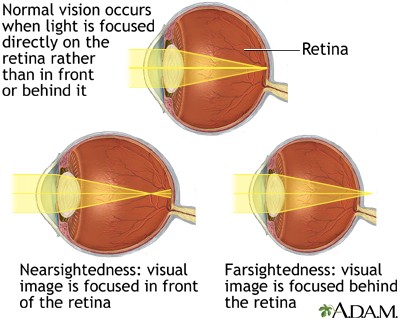
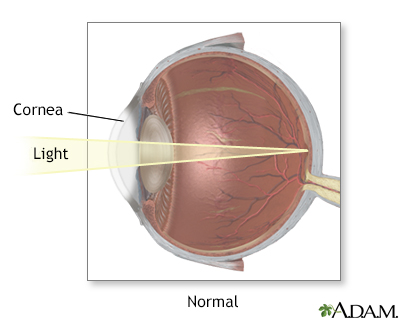

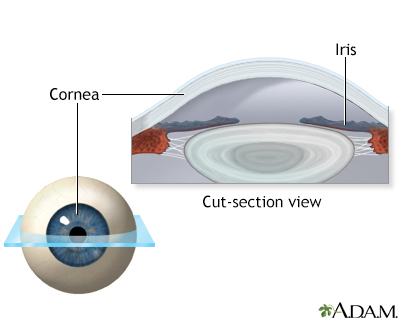

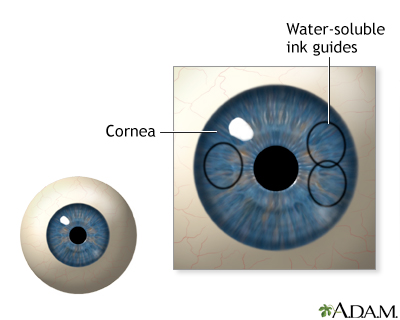
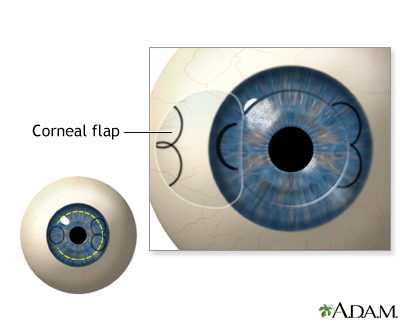
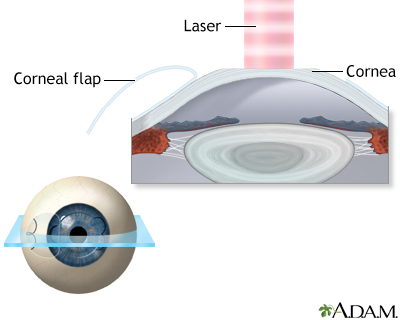
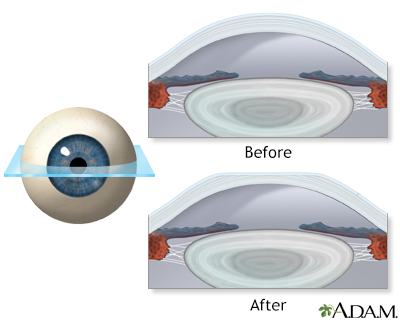
 All rights reserved.
All rights reserved.